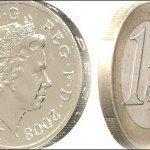 The pound rebounded from a seven-week low against the US dollar, after a report showed that a gauge of UK construction activity surged to 6-1/2-year high.
The pound rebounded from a seven-week low against the US dollar, after a report showed that a gauge of UK construction activity surged to 6-1/2-year high.
GBP/USD hit a seven-week low at 1.6258 at 06:10 GMT, after which the pair erased earlier losses to trade at 1.6336 at 10:02 GMT, adding 0.19% for the day. Support was likely to be received at December 17th low, 1.6220, while resistance was to be encountered at February 3rd high, 1.6438.
The UK Chartered Institute of Purchasing and Supply reported today that its index of construction output, based on a survey among purchasing managers, soared to 64.6 in January, defying analysts expectations for a decrease to 61.5 from Decembers reading of 62.1. Januarys reading was the strongest since August 2007.
The pound was pressured yesterday, as the Chartered Institute of Purchasing and Supply reported that its index, a gauge of the UK manufacturing activity, declined to 56.7 in January, short of analysts’ projections of an increase to 57.1. January’s reading was the weakest in three months, while the index received a downward revision to 57.2 in December from earlier estimates of 57.3.
The sterling, however, continued to draw some support after Bank of England reported last week that the mortgage approvals reached a 7-year high and UK house prices rose to the highest level since April 2008.
Bank of England released a report that showed the number of mortgage approvals increased to a 7-year high of 71 638 in December, after an upward revised figure of 70 820 in the previous month. However, analysts had expected that the mortgage approvals will rise to 72 900 and in addition the indicator has limited influence on the exchange rate of the pound as the BBA mortgage approvals account for over 60% of the overall mortgage approvals. The BBA data is released few days prior to BoE’s mortgage approvals data.
A separate report by the central bank revealed the net consumer credit, which includes personal loans, overdrafts, and credit card lending rose by 0.6 billion pounds in December, after November’s reading was upward revised to 0.7 billion pounds from earlier estimates of 0.6 billion pounds increase. According to the median analyst’ forecast the index should have increased to 0.7 billion pounds last month.
Meanwhile, greenback’s demand was heavily pressured yesterday, after the US Institute for Supply Management (ISM) reported its manufacturing index declined to the lowest level in seven months in January, due to a slump in new orders.
The report revealed that the manufacturing index stood at 51.3 in January, down from December’s reading of 57.0, while analysts had projected that the index will slow down to 56.0 in January. Data also showed that new orders plunged at the fastest pace since December 1980, as the new orders sub-index declined to 51.2 in January from 64.4 in the previous month. Most of the companies cited the bad US weather conditions last month as the main reason for the decreased number of new orders.
A report by the US Census Bureau later today may show the US factory orders declined by 1.8% in December, following November’s 1.8% increase. A higher-than-expected reading will certainly heighten the appeal of the US dollar.
Elsewhere, EUR/USD hit a session low at 1.3494 at 08:20 GMT, after which consolidation followed at 1.3510, losing 0.14% for the day. Support was likely to be received at February 3rd low, 1.3478, also the pair’s weakest since November 22nd, while resistance was to be met at January 31st high, 1.3568.





